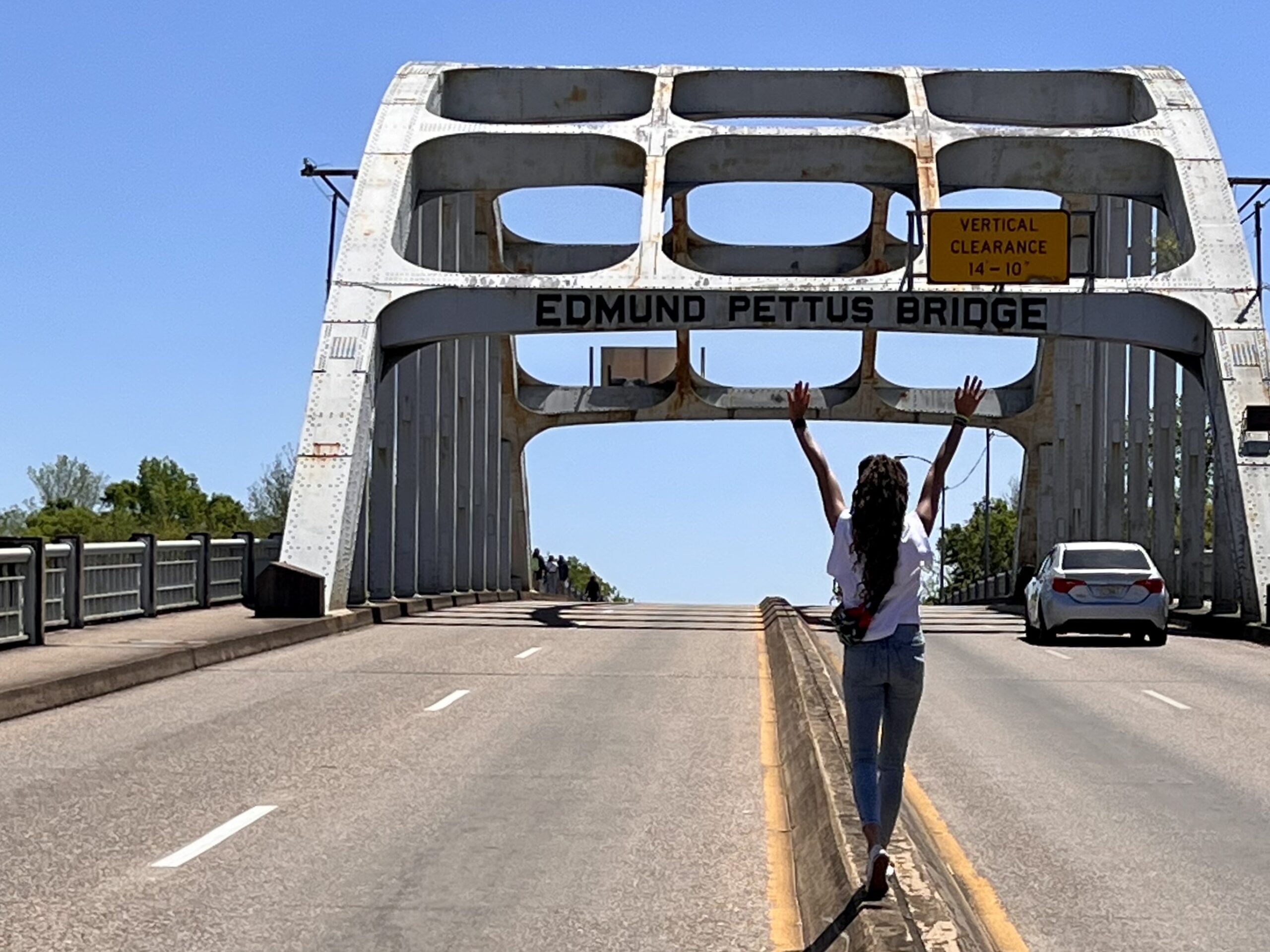As seen in Dreamscapes Magazine Winter 2023
It is only early spring, but the air is hot and heavy in Birmingham, my first stop on the Alabama Civil Rights Trail. I am standing in Kelly Ingram Park, where in May of 1963 over a thousand students were met with violence, dogs, and fire hoses as they protested racial segregation. I picture those innocent youth fighting tirelessly so that Black and biracial people like me could be recognized as human beings. This park has since been renovated, enclosed in a perfectly picturesque square. Today, powerful bronze statues vividly depict the gut-wrenching scenes. Four little girls who died in the 16th Street Baptist Church bombing across the street are honoured in The Four Spirits sculpture. Another statue is of a boy flinching before a police officer and his dog, forever immortalized in bronze. At the memorial park’s centre, an imposing statue of Martin Luther King Jr. is raised on a pedestal. All statues capture the struggles of the past and a promise of hope for the future.
Established in 2004, the Alabama Civil Rights Trail identifies landmarks that serve as historic markers made by Black American communities in the U.S. civil rights movement. Recently 15 states joined Alabama to create the U.S. Civil Rights Trail, a nationwide collection of sites that commemorate the civil rights movement of the 1950s and 1960s. In three Alabama cities (Birmingham, Selma and Montgomery) famous for their civil rights demonstrations, I explore places that leave me both despondent by injustice and inspired by the continued resilience of the Black community.
Bethel Baptist Church, Birmingham
I arrive at Bethel Baptist Church, a small red-brick building that served as a meeting place during the ’50s and ’60s for those protesting inequality and segregation in Alabama. Daylight streams through the green and purple stained-glass windows as I enter the modest sanctuary, walking between the wooden pews toward the pulpit where civil rights giant Dr. Martin Luther King Jr. once spoke. Although the space is small, it feels voluminous, as though an ocean could fit inside.
This church, led by Rev. Fred Shuttlesworth, became a launch pad for the modern civil rights movement. Although it was bombed on three separate occasions, the humble building was never destroyed and remains a symbol of the perseverance and tenacity of the movement.
Bethel Baptist Church, which was designated as a National Landmark in 2005, has also been a UNESCO nominee seeking World Heritage Site status since 2008.
Edmund Pettus Bridge, Selma
The sun warms my face as I stand at the foot of the Edmund Pettus Bridge in Selma, another pivotal landmark on Alabama’s Civil Rights Trail. I inhale the solemnity of those who passed before me as I step on this smooth asphalt that changed history. In 1965, over 600 souls protesting national voting rights were beaten crossing the Alabama River. History calls it “Bloody Sunday.”
After three attempts over five days, demonstrators finally crossed the bridge. This event contributed to the Voting Rights Act of 1965, which prohibits discrimination at the polls. To me, the arched blue steel structure is a constant symbol, as though it knows its integral place in American history.
The Edmund Pettus Bridge, which was declared a National Historic Landmark in 2013, is another historic marker under UNESCO World Heritage site consideration.
The Legacy Museum, Montgomery
When I first glimpse The Legacy Museum: From Enslavement to Mass Incarceration, I instantly feel how this barracks-like building can be a comment on Black oppression. Funded by the Equal Justice Initiative, a local non-profit organization that provides legal representation for the wrongly convicted, the museum is built on old slave auction land. Its large exterior frame is a rectangle of steel and glass. Inside, I explore the saga of the African-American journey from slavery to the civil rights struggles endured today.
As I enter, I am enveloped by the sound of waves crashing against the shore. Around the dimly lit room, lifelike statues of kidnapped Africans are seen shackled and chained, some reaching for one another, others clutching their babies—it’s a chilling sight.
Life-size holograms of slaves pierce the walls, as their stories of violence and abandoned hope come to life. A detailed timeline steers me from room to room and throughout these harrowing displays, I see America’s painful past, present, and possible future.
LESSON LEARNED
The Alabama Civil Rights Trail provided me the space to further explore my Blackness. I am comforted that despite a troubled history and afflicted present, I am not alone. The two UNESCO nominations highlight the need for global recognition, to shine a light on this dark past. It is a reminder that we must continue the fight for freedom and equality, and that the fight never ends.

